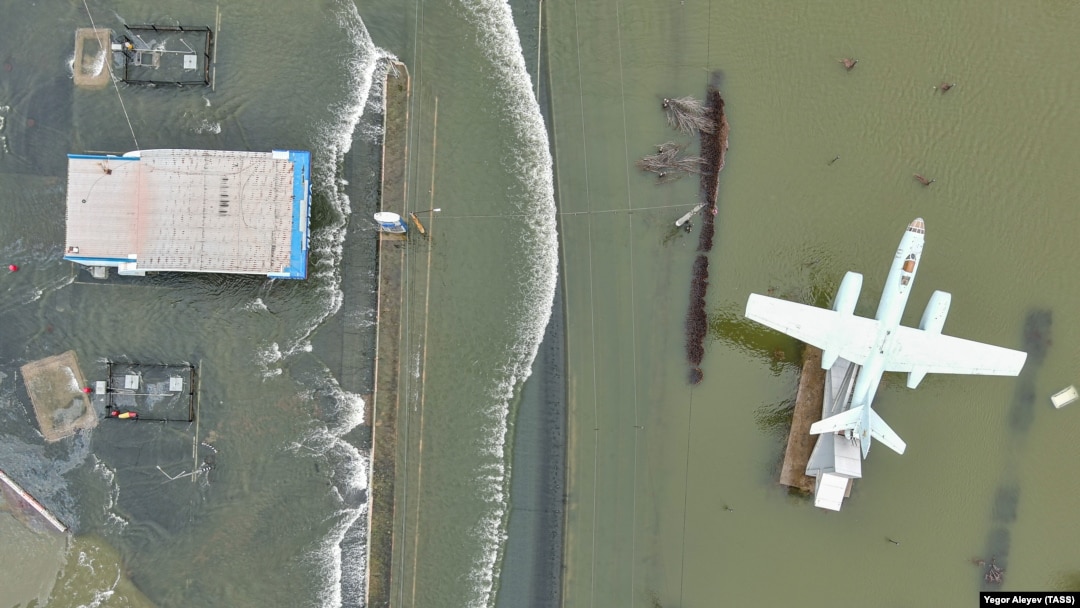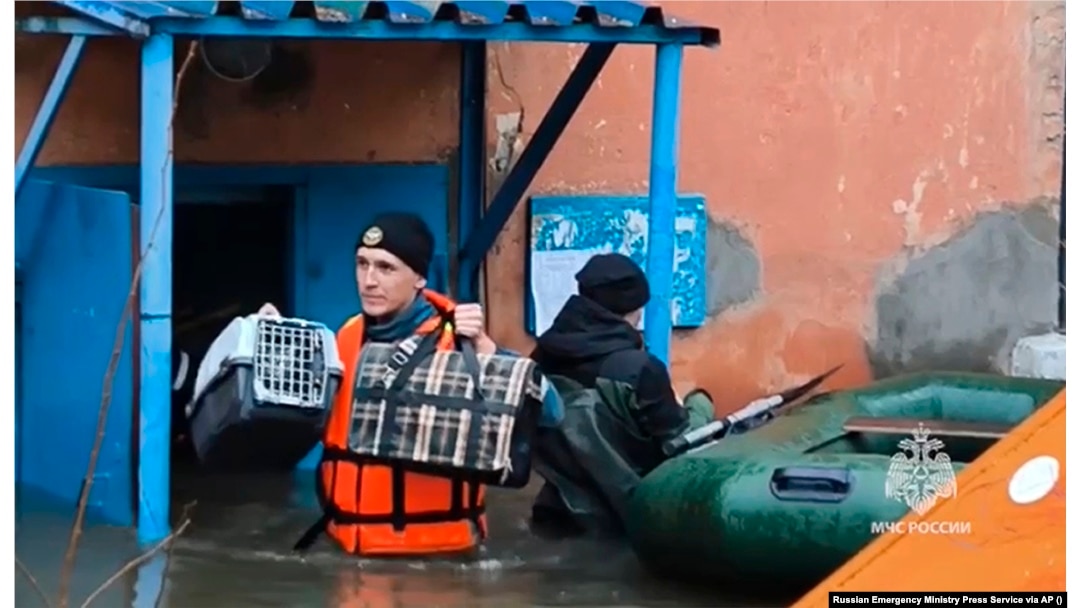Thousands of residents have been evacuated in southern Russia and northern Kazakhstan as melting snow and a burst dam continue to raise water levels that aren't expected to crest for another day.
Vasily Kozupitsa, mayor of the city of Orsk in Russia's southern region of Orenburg, which borders Kazakhstan, said on April 8 that residents of the city's districts along the Yelshanka River were being evacuated as the river's waters rose dramatically.
Since April 5, the floods have twice caused the partial collapse of a dam on the Ural River in Orsk, a city of 230,000, after which half of the city's old town found itself underwater.
The Investigative Committee has since launched a probe into what it called "negligence and the violation of safety regulations" by the dam's builders.
The Kremlin said water levels in some areas had risen at their fastest rate in a century, while local officials say they don't expect water levels to stop rising until April 9 at the earliest.
Russia Declares Federal Emergency As Floodwaters Force Evacuations
High water levels have also affected the region's capital, Orenburg, a city of more than 500,000, where the water level on the Ural River, which also crosses into the territory of neighboring Kazakhstan, where it is known as the Oral River, continues to rise.
According to the latest official data, 10,200 residential buildings and 18,500 households in the Orenburg region have been damaged by the floods. Rescue teams evacuated more than 6,100 people, of whom more than 1,000 have been placed in temporary shelters.
Officials in another Russian region bordering Kazakhstan, Kurgan, declared a state of emergency over the abrupt jump in the water level in the Tobol River in recent days. According to officials, some 60 communities face floods in that region.
Residents living near the Tobol River in Kurgan are being evacuated. Local authorities announced on April 8 that schools will be converted into temporary shelters. Children will continue their schoolwork online from home.
In recent weeks, massive snow melting caused by abrupt warm weather led to heavy floods in the Russian regions of Kemerovo, Novosibirsk, Tomsk, and the Altai Krai.
In neighboring Kazakhstan, officials in the western region of Atyrau introduced a state of emergency on April 7 due to the floods.
Kazakhstan's Emergencies Ministry said on April 7 that two people had died while trying to reach a house affected by high waters in the town of Qulsary.
According to the ministry, more than 72,000 people, including 16,000 children, were evacuated across several Kazakh regions.
The floods affected the regions of Abai, Aqmola, Aqtobe, Atyrau, North Kazakhstan, Qaraghandy, Qostanai, and West Kazakhstan, the ministry said.
The ministry said earlier that four people had gone missing in the Central Asian nation's northeastern region of Abai during the floods.
In a televised statement on April 6, Kazakh President Qasym-Zhomart Toqaev called the floods the largest natural disaster to hit the country in the past 80 years.
In Orsk, the city most impacted by the flooding, hundreds of residents gathered outside the mayor's office to complain about the amount of compensation from the state and lack of early warning.
Local prosecutors warned Orsk residents against taking part in unsanctioned protests.



